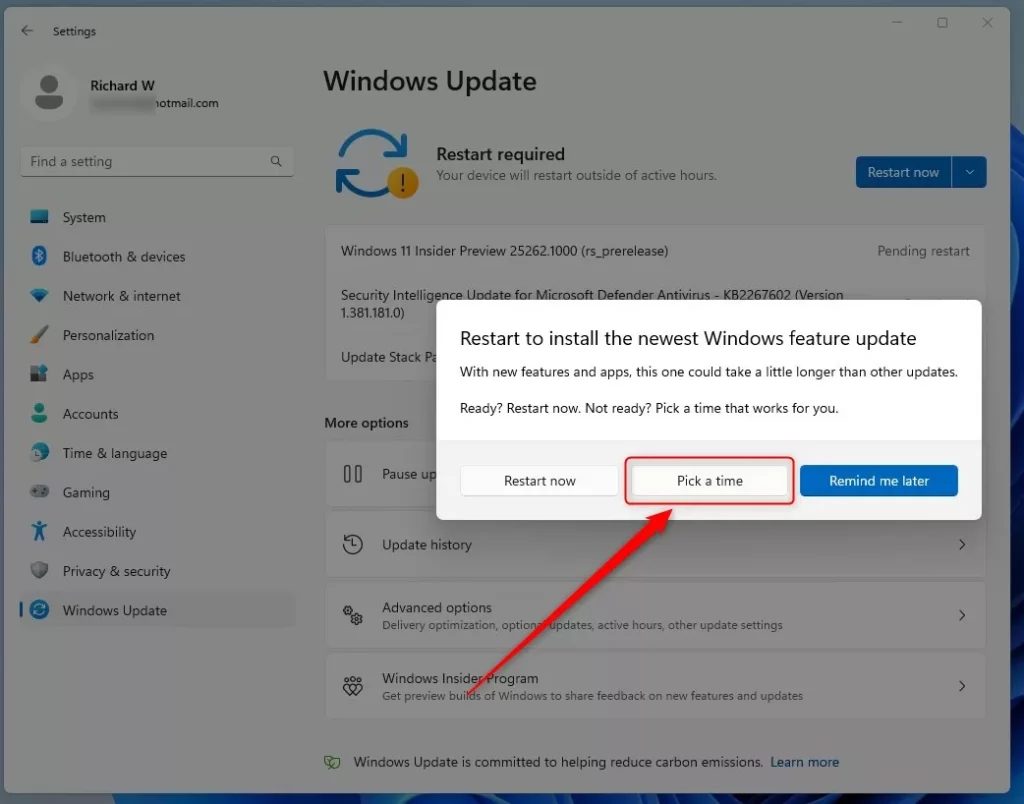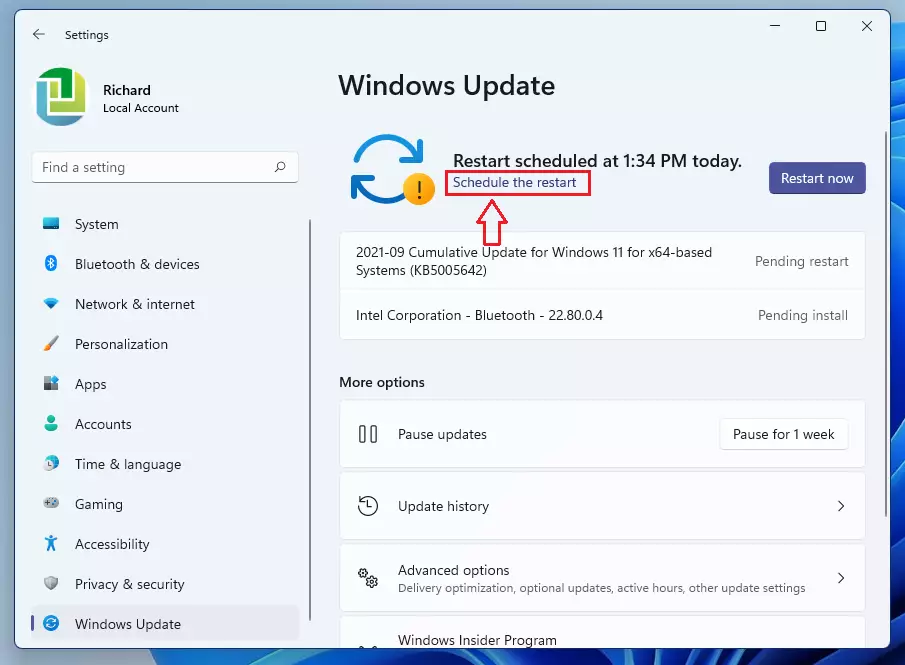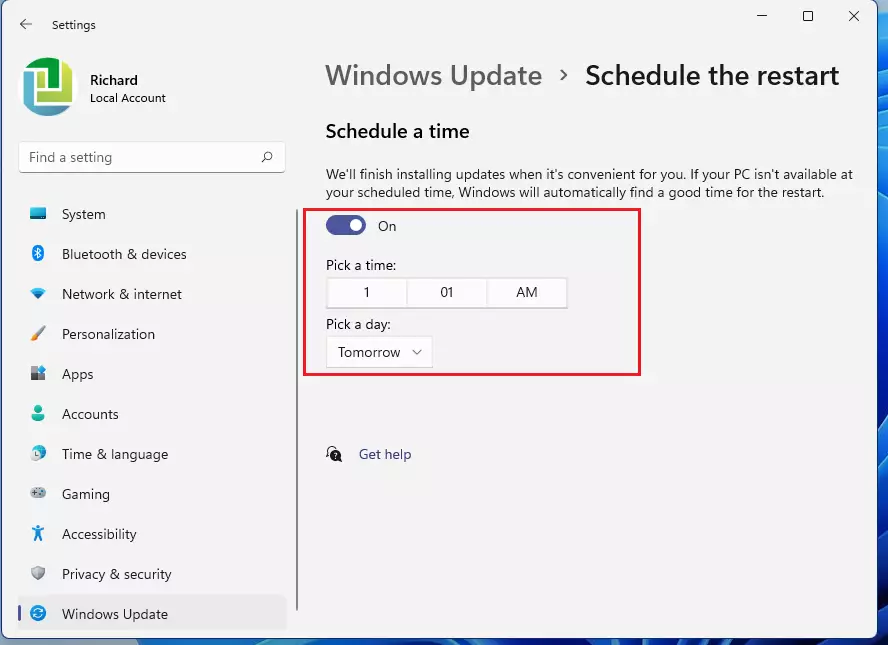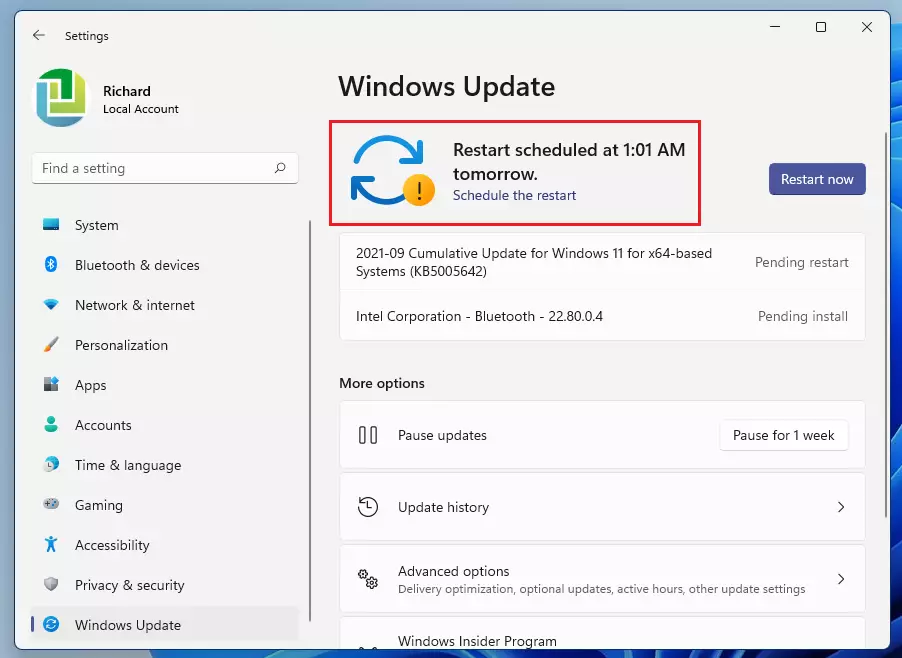This article explains how to schedule Windows Updates to restart in Windows 11.
Windows allows you to schedule a restart after an update for up to 7 days. By default, after you update your computer, Windows prompts you to restart it so the updates can apply immediately.
If you can’t do a restart at the time when prompted, you can schedule a more convenient time to install and apply the updates. Sometimes, you won’t get a notification if the updates are installed in the background while using your computer.
Windows will attempt to restart your computer automatically when you’re not actively using it or the computer is idling. However, there might be cases when you don’t want your computer to reboot. In a situation like that, schedule the update later.
How to schedule a restart after Windows Updates
As mentioned above, Windows tends to restart after an update so that new features and security fixes can be applied. If you can’t do a restart at the time of the updates, you can schedule it, and the steps below show you how to do that.

Windows 11 has a centralized location for the majority of its settings app. From system configurations to creating new users and updating Windows, all can be done from the System Settings pane.
To get to System Settings, you can use the Windows key + I shortcut or click on Start ==> Settings, as shown in the image below:

Alternatively, you can use the search box on the taskbar to search for Settings. Then select to open it.
Select Windows Update on the left to open the Windows Update page on the Windows Settings pane. At the top of the page, under the Restart required or Restart scheduled message, click Schedule the Restart.

On the Schedule the Restart page, toggle the button under Schedule a time to turn the Schedule On. Then, pick a time and Pick a day you’d want your computer to restart.

After that, your computer will show a message with a scheduled date and time for a restart.

Relax and go back to work. If your computer is on at the scheduled time, it will promptly restart and apply the updates.
That’s it!
Conclusion:
- Scheduling Windows Updates to restart allows for greater flexibility and control over your workflow.
- Users can choose a convenient time, preventing disruption during important tasks.
- Windows 11’s easy-to-follow steps make the process straightforward for any user.
- Regularly scheduling updates ensures that your system benefits from the latest features and security patches.
- Remember to keep track of your scheduled restart to maintain optimal performance and security.

Leave a Reply